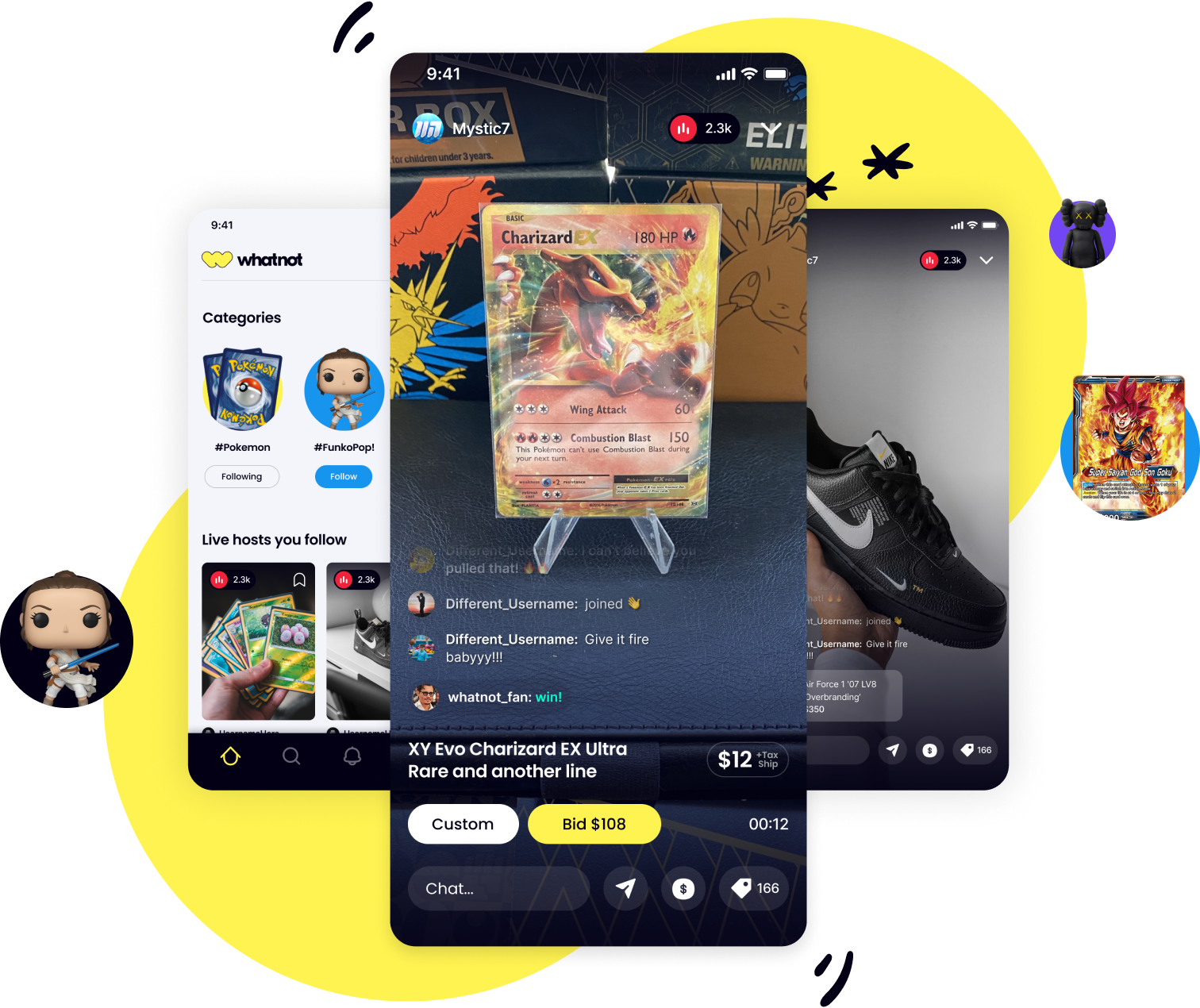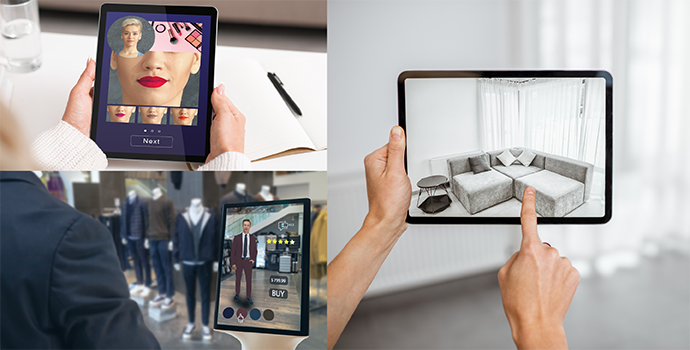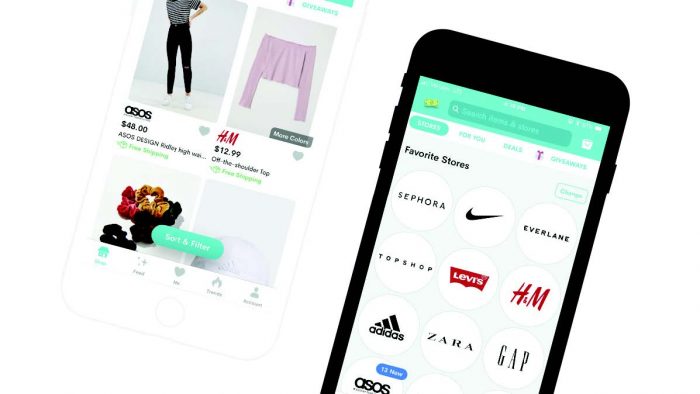Live Commerce: How Streaming Is Transforming Shopping (Update)

Live commerce, a term used to describe the combination of streaming video and e-commerce, promises to revolutionize the retail industry and consumer shopping habits. Here’s a rundown of how live streaming e-commerce is taking shape, trends in the retail space, and our predictions for what’s next.
Table of Contents
- Live Commerce Defined
- The Evolving Retail Industry
- Live Stream Shopping: Trending Technology or Future Standard?
- Live Stream Commerce in China
- Adoption in the U.S.
- Types of Live Commerce
- Companies Shaping the Future of Live Commerce
- What’s Next for Live Commerce: Trends and Predictions
- Moving Live Commerce Forward
- Critical Technologies for Live Selling
- How to Get Into Live Selling
The Evolving Retail Industry
Brick-and-mortar stores have been shutting their doors at an unprecedented rate. Thanks to the COVID-19 pandemic and shifting buyer habits, more than 15,500 retail locations closed down for good in 2020 — with another 80,000 projected to close by 2026.
Business as usual is no longer an option. Retailers must reach customers online and ensure a seamless experience. It’s also crucial to identify new opportunities for engagement that don’t rely on a storefront.
But what about those aspects of the in-store experience that go missing when shopping in the digital world? It’s no secret that buying online yields convenience. Even so, will a visit to Amazon.com ever be as fun as a trip to Rodeo Drive?
Then there’s the matter of physical proximity. The ability to see, touch, smell, and taste a product has always played a major role when evaluating items for purchase. Costco doles out free samples to capitalize on these sensory experiences, just as car lots let buyers test-drive vehicles before signing on the dotted line.
Cue in live commerce. By fusing online retail with live streaming, today’s companies are bringing consumers one step closer to the in-person experience. Multi-media environments bring the digital store to life, and real-time interactivity keeps customers actively engaged.
Not convinced? The numbers speak for themselves:

In China, live stream shopping is a $600 billion market.3
Live Commerce Defined
Live commerce goes by many names, including live selling, live shopping, live stream e-commerce, and more. It falls within a larger category of shoppable video, but is nuanced in its use of low-latency live video.
More specifically, live stream commerce describes the fusion of interactive video with online buying and selling. Done right, it enables customers to purchase goods via a live broadcast without having to navigate away from the stream. Think of it as live shoppertainment that turns viewers into buyers.
Examples range from the Instagram Live Shopping and Amazon Live to live broadcasts of cattle auctions and home shopping platforms like Jewelry Television (JTV).
Live Stream Shopping: Trending Technology or Future Standard?
Just as online shopping transformed retail twenty years ago, live streaming e-commerce promises to revolutionize how goods are purchased and sold today.
While the idea of watching a live broadcast before purchasing a pair of shoes might sound far-fetched, most of us thought the same thing about video calls back in the 1990s. Yet today, we find ourselves heavily reliant on Zoom and Facetime.
Interactive technologies and real-time capabilities have become table stakes in the e-commerce landscape. Chatbots and mobile apps make online customer support seamless. Machine learning technologies provide the personalized recommendations that we’ve all come to expect. And overnight delivery is commonplace.
Live streaming e-commerce is the next major trend, and it’s already impacting the industry in a major way. This convergence of video and retail helps improve engagement, close the gap between customers and products, drive sales, and — in cases where bidding is involved — increase the average sales price.
Get the low latency streaming guide
Understand the critical capabilities required to provide interactive live streaming experiences.
Download FreeLive Stream Commerce in China
To understand live commerce, the first place to look is China — where it’s projected to grow into $770.70 billion market by 2023. Shoppable video was alive and well in China before the pandemic, but COVID-19 brought with it a live commerce boom that shows no signs of stopping.
Taobao — the world’s biggest e-commerce website — empowers farmers, business owners, and self-employed entrepreneurs with consumer-to-consumer live streaming. The Alibaba-owned platform is the eighth most visited site in the world. As a close rival, JD.com also makes it easy for anyone watching a live stream to add items to their cart with just a click.
Successful influencers on the platforms ascend to celebrity-like status, helping elevate the shopping experience from mundane to swanky. And just like at a Nordstrom beauty counter, consumers can ask questions and learn application techniques.
“They sell things that suit you,” explains one live stream follower of the famed ‘Lipstick King’ Li Jiaqi. “For a facial lotion, Li Jiaqi won’t vaguely say it’s moisturizing or anti-aging like most advertising, he will recommend it to people at the right age with the right skin type.”
Beyond just generating fans, the top sellers bring home serious bucks. Li sold $19 billion worth of goods on Single’s Day in 2021 — attracting almost 250 million viewers during the event. To put that into perspective, the most-viewed U.S. television broadcast ever was the 2015 Super Bowl — bringing in a measly 114.4 million viewers.
Changing Dynamics Across Every Industry
Jewelry, fashion, accessories, and skincare all dominate Taobao and JD Live. But since the pandemic hit, traditionally offline industries such as home appliances and cars have also found traction within the apps. Even rural farmers have embraced live streaming to promote goods ranging from rice to fresh fish.
“Growers who had once sold 90% of their products offline have now flipped to selling 90% online,” writes MIT Technology Review’s Karen Hao. “Live streaming has not only helped the industry weather the crisis — it’s forged an entirely new way of business that is likely to continue long after the pandemic is over.”
Both Taobao and JD.com continue to enrich the live experience by adding augmented reality, 3D animations, and enhanced personalization. Other streaming services in China such as Vipshop and short video app Douyin (the Chinese version of TikTok) also have a stake in the live streaming e-commerce game.
Adoption in the U.S.
Western entrepreneurs have been slow to capitalize on the fusion of tech and retail that we now call live commerce. TV shopping programs like the Home Shopping Network, QVC, and Jewelry Television (JTV) were among the first to bring live video-based shopping online — but early applications didn’t take full advantage of interactivity video technologies.
Although certainly late to the party, Amazon launched Amazon Live in 2019. Think Home Shopping Network goes digital, with the addition of icons fluttering on the screen each time a purchase is made. Models try on different outfits while hosts describe the material and fit, guest presenters demonstrate how to use various tools, and the top five kitchen gadgets are showcased for viewers.
A handful of startups also tried to get in on the trend, but American consumers were slow to embrace video-based shopping in its early forms.

And Then, COVID-19 Hit
Just as the pandemic accelerated digital transformation across industries, it forced consumers to evolve their habits and embrace remote models. As a result, live commerce finally took off.
Instagram introduced Live Shopping in the second half of 2020, and Facebook began experimenting with Facebook Shops. Walmart, Google’s Shoploop, and Shopify all joined the party, giving users the chance to buy items featured on live streams via a seamless UX. Plenty of VC-backed companies like NTWRK, Popshop Live, ShopShops, and Moda Operandi also launched during the pandemic.
“COVID-19 really forced retailers out of their comfort zone and to think out of the box. With stores shut, retailers had to find new ways to connect, not just with existing e-commerce consumers, which they already had, but to convert and meaningfully engage those consumers who were used to shopping in-store.”
Saisangeeth Daswani, fashion advisor at Stylus
Walmart began teaming up with TikTok to host live stream shopping experiences for seasonal events. Influencers on the platform use their clout to demo items for purchase, and TikTok delivers a seamless experience for quick in-app purchases.
“With the shoppable live stream experience, it’s exciting to see how the TikTok community loves engaging with their favorite creators and discovering new products. We look forward to continue building innovative ways to power the path from discovery to purchase, and seeing brands like Walmart bring their creativity to users,” explains Blake Chandlee, president of TikTok Global Business Solutions, in a statement about the partnership.
2022 and Beyond
TikTok recently launched live shopping in the U.S. as a standalone offering. Likewise, Amazon now features live streams on their home page (though you’ll have to scroll down to find them).
But whether live commerce will have the same traction in Western markets that it commands in the Asia-Pacific region has yet to be seen. Facebook ended its foray into live stream shopping program on October 1st of this year due to a lukewarm response. It may also be that while interactive influencer streaming resonates strongly with China’s shoppers, large-scale professional broadcasts are more likely to convert U.S. viewers.
With Amazon Prime now owning exclusive rights to Thursday Night Football, what’s to stop Bezos from overlaying live shopping capabilities within the broadcast? Imagine being able to purchase the 2022 Cancer Awareness gear sported by coaches on the sidelines within the same screen you’re viewing the game. Though less interactive in nature, these applications of live commerce would still replicate a sense of urgency and engagement by blending entertainment with transactions.
Types of Live Streaming E-Commerce
Here’s a look at some of the most common formats for live shoppable media today.
Online Marketplaces
Online marketplaces ranging from Alibaba to eBay have been around for some time, empowering users to buy and sell products without ever leaving their homes. Video technology is helping to revive this model and deliver the closest possible experience to ‘being there’ for those tuning in from their living room. Plus, real-time interactivity replicates the urgency of a real marketplace, prompting immediate action and enhanced community participation.
Live Auctions
Live video streaming is also bringing 18th-century auction houses like Sotheby’s and Christie’s into the 2020s. By enriching their digital presence, these organizations are connecting bidders worldwide with the excitement of the saleroom. Live streaming opens up the bidding pool to those unable to physically attend, reaching participants with varying interests and ensuring that each item sells at its proper valuation.
Online auctions are big business, and real-time video delivery is critical. One shopping platform focused on this format is Whatnot, which taps into an underserviced market by capitalizing on the nostalgia for paper goods like comic books and sports cards. The company has raised $225 million in funding to date, putting its valuation at $1.5 billion (and thus giving it unicorn status).

Influencer Streaming
With an already captive audience, online influencers can use their personal brand and the power of live streaming to promote their favorite products in an interactive format. Also called key opinion leaders (KOL), influencers are key to Taobao Live’s success. In the U.S., celebrities like Kim Kardashian also have piggy-backed on this phenomenon.
The influencer format converts younger demographics at the highest rate. While only 26% of the general populations’ purchase decisions are based on social influencers’ recommendations, the same is true for 44% of Gen Z’s.
Tutorials
Tutorials are the bread and butter of the cosmetic industry, where Ulta Beauty is driving live commerce innovation. With Beauty School Live, Ulta broadcasts virtual masterclasses on makeup trends and application techniques. Additionally, the brand hosts live streams on Supergreat, a beauty app that connects its Gen Z userbase with influencers sharing skin routines, application techniques, and product reviews.

Live Events
There’s plenty of overlap between live events and the categories described above. Still, newsworthy events such as product launches, limited edition drops, and retail holidays like Singles Day or Black Friday lend incredibly well to shoppable live broadcasts.
Kohl’s was an early adapter of live selling by streaming the LC Lauren Conrad Runway show during the 2015 New York Fashion Week. Delivered via Periscope, viewers had the option to purchase any garments seen on the catwalk via a dedicated portal. Today, shoppable mobile streaming allows fans to purchase items in real time from the catwalks of Louis Vuitton and Victoria’s Secret.
Companies Shaping the Future of Live Commerce
Curious which live commerce platforms are laying the groundwork? Here’s a list of companies to watch:
- Taobao Live: If Amazon, Meta, Twitch, and eBay had a baby, it would look a lot like Taobao Live. As the trailblazer in the industry and the eighth most visited site in the world, Taobao relies on influencers to attract millions across their fanbase to the interactive platform.
- Whatnot: With a valuation of $3.7 billion, Whatnot is a live auction marketplace where shoppers can find anything from collector Pokémon cards to NFTs.
- Instagram: Open up your Instagram app, click the Shop icon, push the Live button and shazam! You’ll find yourself in Instagram Live. This feature lets users browse and buy products without ever leaving the Instagram app.
- Ulta Beauty: With Beauty School Live, Ulta brings shoppers into a virtual masterclass where they can research cosmetic products. Alternatively, customers can use the Gift Advisor 1:1 feature to video chat with an expert much like they would in a physical store.
Keep Up With All the Latest Trends
Subscribe to stay in the know about all things video streaming.
Subscribe NowWhat’s Next for Live Commerce
Successful deployment of shoppable video requires more than just streaming. Simple in-app purchasing (in a couple of clicks or less) is essential for platforms looking to blur the gap between ‘scrolling’ and ‘shopping.’ Leveraging data automation for personalization is also a must, as is experimenting with technologies like extended reality (XR) and machine learning (ML) to transform the end-user experience.
Here are some of the complementary technologies that are transforming e-commerce today.
Metaverse Immersion
When live commerce is done correctly, gamification and real-time interactivity help drive consumer interest. Immersive 3D experiences using virtual reality (VR) also better engage remote users — allowing buyers to study the clothing from every angle and experience the excitement of being in the crowd of a runway show.

Augmented reality (AR) also promises to push live commerce forward. Picture this: After purchasing a new home, you enlist the expert help of an interior designer working at your favorite home furniture store. Within an app, you’re able to show the designer the space you’re working with. Then, using augmented reality, you can try the representative’s suggested furniture on for size. Simply point your camera at the empty space, and let the app overlay an image of the couch, table, or rug you selected.
Blockchain, NFTs, and Crypto
Cryptocurrency and non-fungible tokens (NFTs) will likely play a role in future e-commerce monetization models. And the retail sector is already making moves to embrace this technology. Nike, for instance, recently acquired the NFT and virtual shoe company RTFKT to prepare for the trending metaverse.
“In such blockchain-based environments, users can buy virtual land and other digital assets such as clothing for avatars in the form of a crypto asset called a non-fungible token (NFT),” explains Reuters.
The mobile app NTWRK also built blockchain into its strategy, enabling users to buy and sell NFTs, rare art, and collectibles. The platform has been making headlines for its gains in funding — with a recent $50 million infusion led by Goldman Sachs Asset Management — indicating that plenty are banking on blockchain-based business models.
Moving Live Stream Commerce Forward
While the technologies discussed above pave the way to endless possibilities, innovation in live commerce doesn’t require getting too fancy.
A new gardener might choose to visit a garden center rather than shop online out of the need to speak with someone. So why not create a solution where users can live stream while a garden expert diagnoses whether their plants are suffering from gray mold or spider mites? By video chatting with a representative and streaming their sick plant, the buyer would be more confident about their purchase (and more likely to spend money).

Even in the pre-pandemic world, the physical mall was clinging to an outdated model. As our lives become increasingly digital, replicating certain material aspects of shopping will always lure in customers.
Plus, if there’s one thing Zappos (an early e-commerce trailblazer) taught us, it’s that customer experience matters. The retail giant got ahead by encouraging customers to order multiple sizes of the same product, and then providing a free and easy way to return whatever didn’t fit.
No, live commerce isn’t an exact replica of the in-store shopping experience. But in an economy where customer experience dictates which brands live and which brands die, why not reach shoppers on their own terms?
Critical Technologies for Live Selling
From a technical standpoint, a few capabilities are minimum entry requirements for breaking into the live stream e-commerce space.
Real-Time Video
Low-latency video technologies are foundational to live selling. Without speedy video delivery, interactivity just isn’t possible. Besides, the draw of live commerce is often just that: the ability for viewers to become participants in a dynamic experience.
Real-time video enables engagement via questions, comments, emojis, and bids— resulting in an immersive experience and urgent rate of purchases.
Scalable Streaming
The more people tuning into a retailer’s streaming event, the more products they’ll sell. But broadcasting at scale doesn’t come easy while maintaining two-way engagement. Most streaming technologies prioritize either low latency or scalability, rather than a combination of the two.
For that reason, anyone building a live commerce platform will want to seek out video technology purpose-built for Real-Time Streaming at Scale.
Video Analytics
Retailers need a complete picture of what’s going on. Video analytics tools provide essential insight into customer behavior and help uncover opportunities for improvement.
With comprehensive visibility into viewer engagement and demographics, retailers can make personalized recommendations and keep shoppers interested. For this, your best bet is an integrated video platform that provides observability every step of the way.
How to Get Into Live Selling

Determine Your Requirements
The first step is asking some questions about your specific use case. It would behoove of any retailer to consider the following:
- Are you integrating live commerce into the customer experience or simply using it as another distribution channel? If the latter, social media channels provide all the functionality required.
- Do you want to own and streamline the customer experience or are you O.K. with letting another provider dictate how your buyers access your products? For full control, you’ll need to build a solution that’s entirely yours.
- Is insight into customer demographics and engagement important? Holistic visibility into the entire broadcast life cycle requires an integrated video solution with analytics tools.
- Do you hope to innovate further with virtual reality (VR) and other cutting-edge features? With companies like Meta investing heavily in VR, you’ll want to plan your strategy with future innovation in mind.
Live Selling on Social Media
If you’re dabbling in live selling but not ready to fully commit, social media sites like Instagram and TikTok are the place to start. You’ll have access to a large audience and a premade solution, but will be limited on your ability to capture data and keep shoppers on your domain.
Live Selling With Off-the-Shelf Platforms
For companies looking to build their own channel, there are two options. Video platforms like Wowza that let you build your live commerce app from the ground up or out-of-the-box solutions with pre-made features, themes, and tools.
These pre-configured solutions work well for small businesses because they require fewer developer resources. Solutions like Bambuser and Firework offer building blocks closer to drag-and-drop tools that you might find sufficient for your video needs.
But anyone building a tailored solution that’s differentiated from competitors is better off with a comprehensive and customizable video platform. You might also want to select a platform that offers engineering support to streamline development.
Building Your Own Channel
By building with Wowza, you’re able to choose your own adventure. We offer flexible a video platform to adapt to your changing needs. Plus, our Professional Services team can help accelerate time to value and help you realize business success quickly.
Our integrated video platform delivers:
- Analytics for customer insights and visibility into stream health
- Infrastructure designed to scale and grow with your business
- The ability to fully customize the user experience (UX) rather than being constrained to a preexisting option
- Limitless flexibility to experiment with technologies like VR, AI, and whatever else comes next.
Don’t just take our word for it, here’s what one of our live streaming e-commerce customers has to say:
“Wowza is a preferred partner that we’ve relied on to power our video technologies for over a decade, and we’re excited about the new capabilities they’ve brought to market with the release of Wowza Video. The user interface and new stream monitoring page are very nice, very clean. And for someone who wants to do live streaming plus their own front end for a video offering, the API is strong and makes total sense.”
Patrick Freeman, digital media systems administrator at JTV
So what are you waiting for? Get started building your live commerce app today with a free trail.




